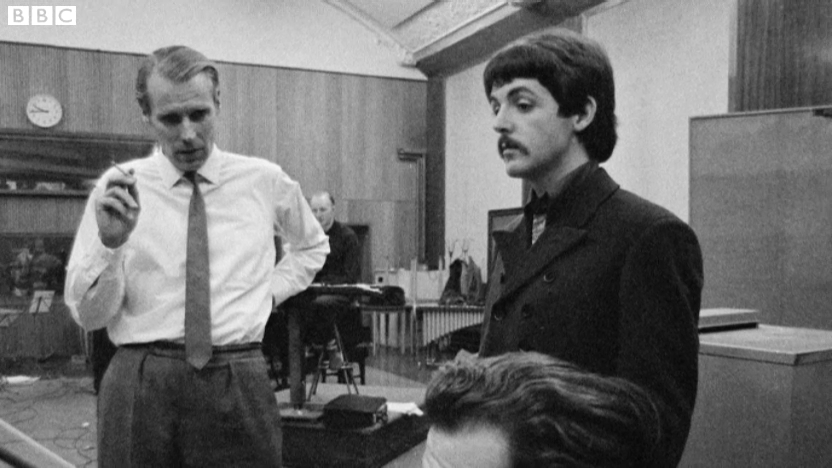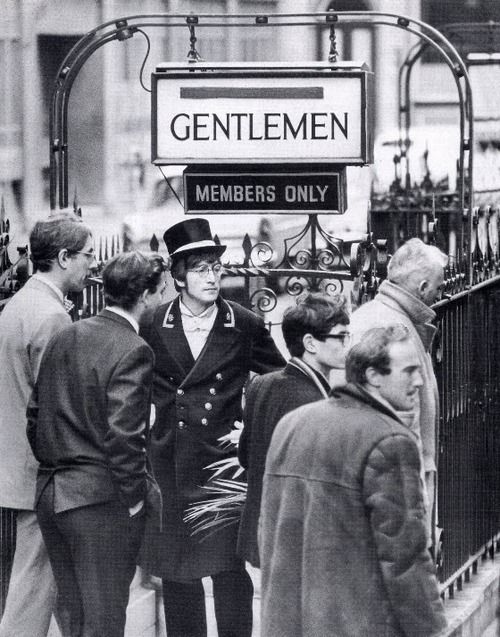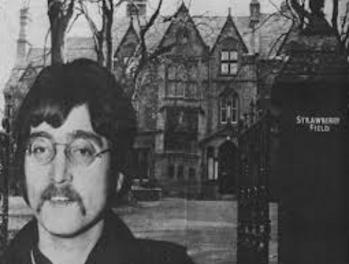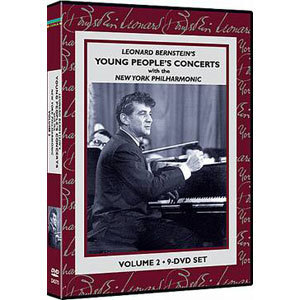Strawberry Fields Forever

The Beatles recorded two more takes of Strawberry Fields Forever, numbered 5 and 6, during this 2.30-8pm session.
The group began with lengthy rehearsals and discussions, before recording take 5. The performance was a false start, however, but take 6 was successfully performed through to the song's close.
The Beatles used the same arrangement as the previous day's session, with a rhythm track featuring Paul McCartney on Mellotron, John Lennon and George Harrison on electric guitars, and of course, Ringo Starr on drums.
Take 6 was a strong performance with an extended coda. Lennon added slowed down vocals and McCartney recorded a bass guitar part, and a reduction mix was made to free up two tracks on the tape. This mix became take 7.
John Lennon then double-tracked his vocals during the choruses, and an overdub using the Mellotron's guitar and piano settings was the last item to be recorded. Three rough mono mixes, numbered 1-3 were then made and four acetate discs were pressed for The Beatles' reference.
The group later remade the song, but the first minute of take 7 was eventually incorporated into the final release.
Studio Two, EMI Studios, London
The Beatles recorded three more takes of Strawberry Fields Forever during this 7pm-1.30am session.
The Beatles' first task was to complete a satisfactory rhythm track. Take two followed a similar arrangement to the first session's, with a Mellotron introduction performed by Paul McCartney, John Lennon and George Harrison on electric guitars, and Ringo Starr on drums and maracas. It ended after the final chorus.
Take three broke down during the introduction, after Lennon complained that the Mellotron was too loud. The fourth take was complete, however, and featured Harrison using the Mellotron's guitar setting to add slide guitar and Morse code-style notes. Lennon then added lead vocals, with the tape running faster so it was slower upon playback, and McCartney added a bass guitar part to the final track.
Take four was marked 'best', albeit temporarily. Three rough mono mixes were then made for reference purposes, but after further reflection, The Beatles decided to re-record the rhythm track on the following day.

Broadwick Street, London
Lennon played the role of Dan, a doorman at the fictional nightclub Ad Lav. The name was a spoof on the Ad Lib Club, a venue often frequented by The Beatles and other leading showbusiness personalities of the mid-1960s. Dan the doorman
Lennon wore a uniform complete with top hat and gloves, and for perhaps the first time in public wore the wire-framed granny glasses that would soon become his trademark.
The 51-second sketch was filmed early in the morning on London's Broadwick Street, beside the entrance to the underground men's toilet on the corner of Hopkins Street. It also featured Peter Cook as the Duke and Duchess of Windsor.

Strawberry Fields Forever was one of The Beatles' most complicated recordings. With George Martin they spent some time working on the arrangement, going through various re-makes and spending an unprecedented 55 hours of studio time completing the song.
The Beatles' fourth Christmas record, Pantomime: Everywhere It's Christmas, was recorded on this day at the first floor demo studio owned by their publisher, Dick James.
Each member of The Beatles sang on the recording, with Paul McCartney also playing piano. A number of songs and skits were recorded, which were edited into a 10-part, six-minute piece on 2 December. The songs included Everywhere It's Christmas, Orowainya, and Please Don't Bring Your Banjo Back, and the sketches included Podgy The Bear And Jasper, and Felpin Mansions.
The Beatles' Fourth Christmas Record – Pantomime: Everywhere It's Christmas was edited by The Beatles' press officer at Abbey Road on December 2, 1966, and was sent to members of The Beatles' UK fan club on December 16th.

Studio Two, EMI Studios, London
And so the beatles entered the new phase of their career! No longer the tidy, smiling "Fab Four", singing boy/girl pop songs on stage. Now they were the casually dressed, sometimes mustacioed, not always smiling Beatles who would make the greatest ever batch of rock recordings at and for their merest whim, strictly not for performing on stage.
John, Paul, George and Ringo had scarely spent a day together since early September. Now they had decided to reunite and begin recording a new album. "Strawberry Fields Forever" captured in one song much of what the Beatles had learned in the four years spent inside recording studios, and especially 1966, with its backwards tapes, vari-speeds and uncommon musical instruments. And it could only have been born of a mind (John Lennon's) under the influence of outlawed chemicals. Strawberry Field is a Salvation Army home in Liverpool, around the corner from where John was brought up. He went there for summer fetes and had called the surrounding wooded area Strawberry Fields. "Strawberry Fields Forever" evoked those childhood memories through a dreamy, hallucinogenic haze. It was, and remains, one of the greatest pop songs of all times.
It is also known, correctly, for being among the most complicated of all Beatles recordings, changing shape not once but several times. Take one, recorded from 7:00 pm to 2:30 am in this first session, was certainly far removed from the final version, the only similarity being a mellotron introduction. (The precursor of the synthesier, this instrument contained tapes which could be "programmed" to imitate another instrument, in this instance a flute.) By 2:30 am take one sounded like this: simultaneous with the mellotron, played by Paul, was John's first lead vocal, followed by George's guitar, Ringo's distinctive drums (with dominant use of tomtoms), maracas, a slide guitar piece, John's double-tracked voice and scat harmonies by John, Paul and George. The song came to a full-ending with the mellotron. The entire take was recorded at 53 cycles per second so that it sped up on replay, but still it lasted only 2 minutes, 43 seconds.
Source: The Complete Beatles Chronicle - Mark Lewisohn

Leonard Bernstein, who took an ongoing interest in the Beatles, analyzes the harmonic structure of "Norwegian Wood" in the televised Young People's Concert, "What is a Mode?"

The Beatles are getting ready to record a very famous tune. Can anyone guess?
Nothing to mention on this day 50 years ago.